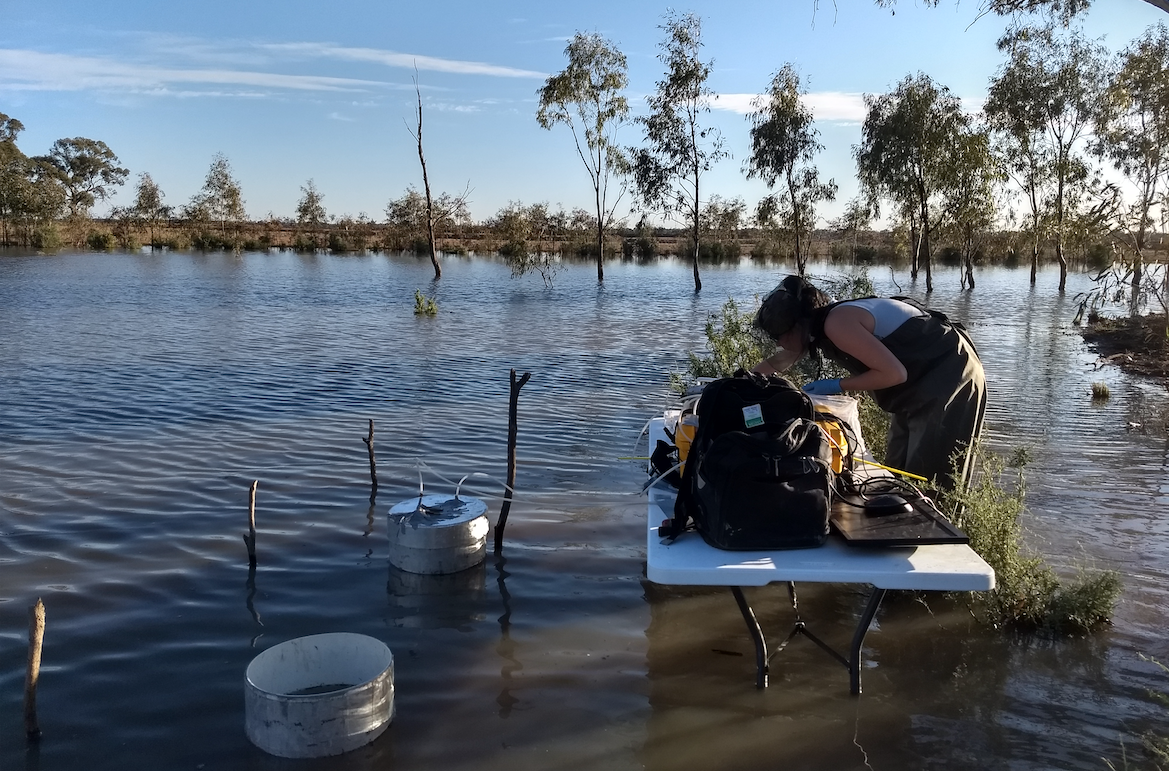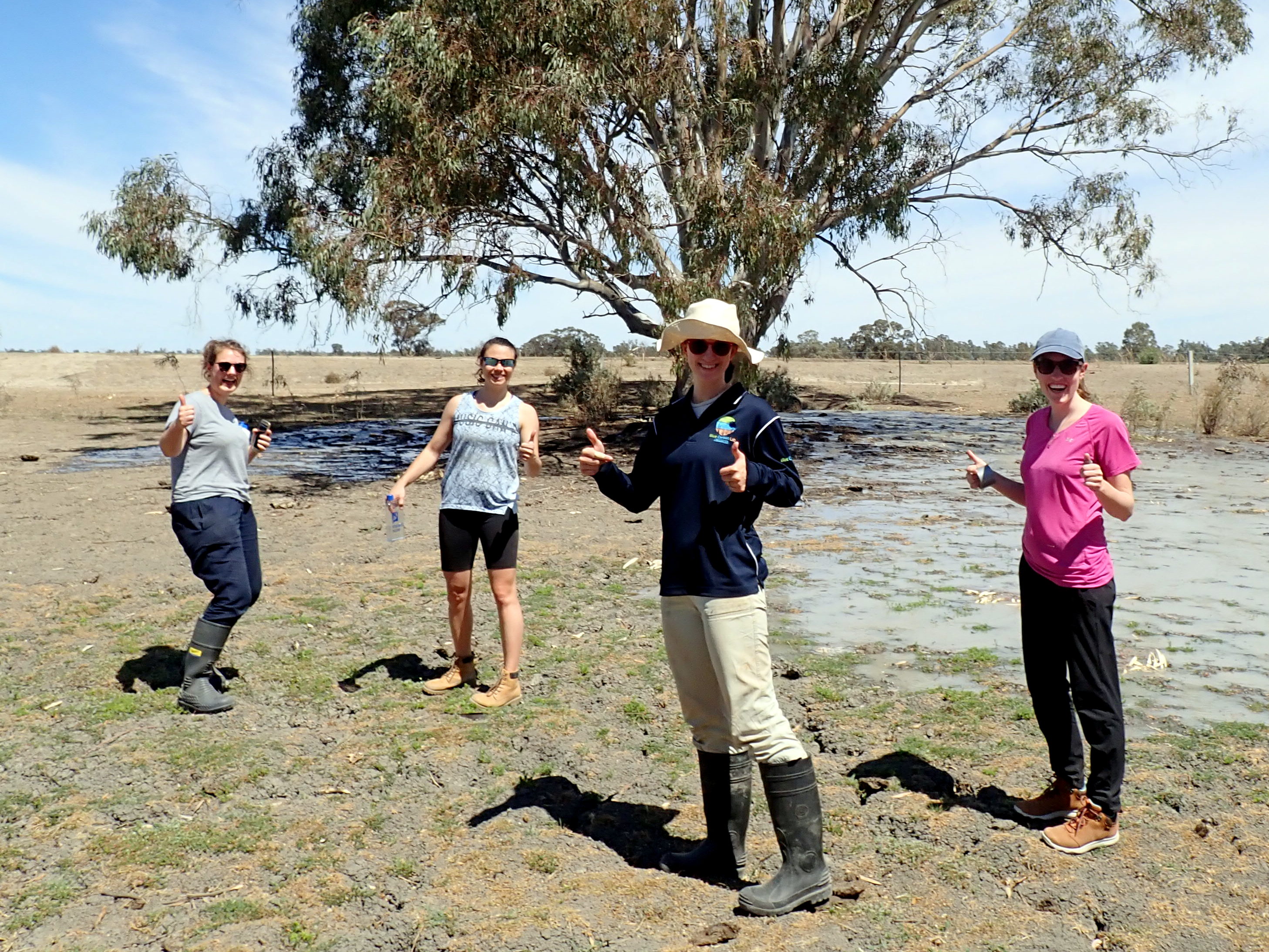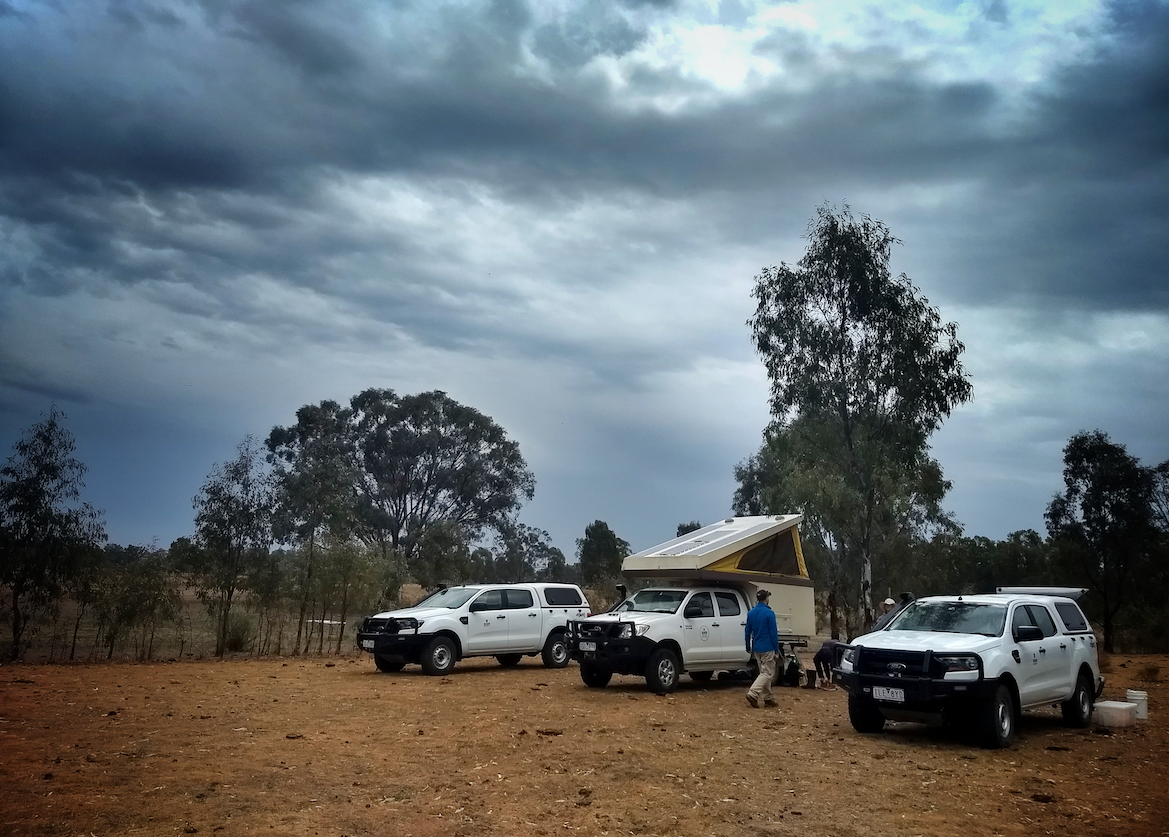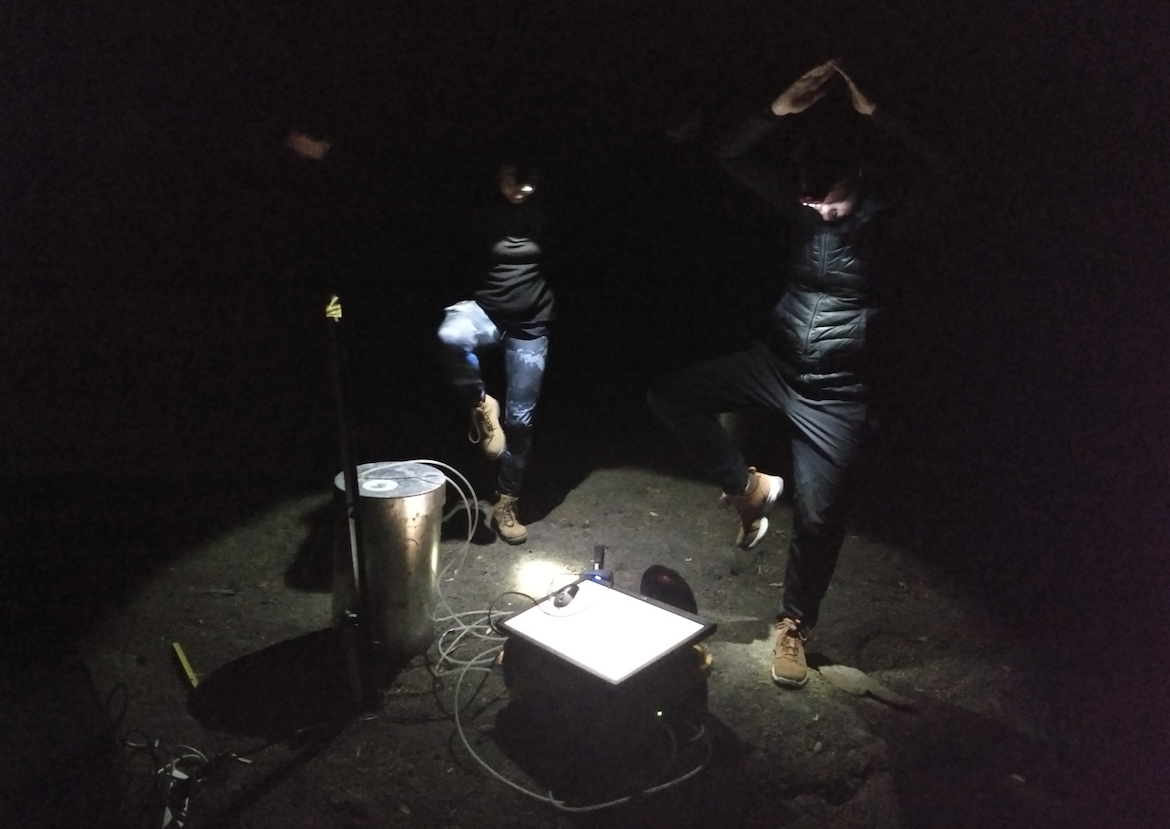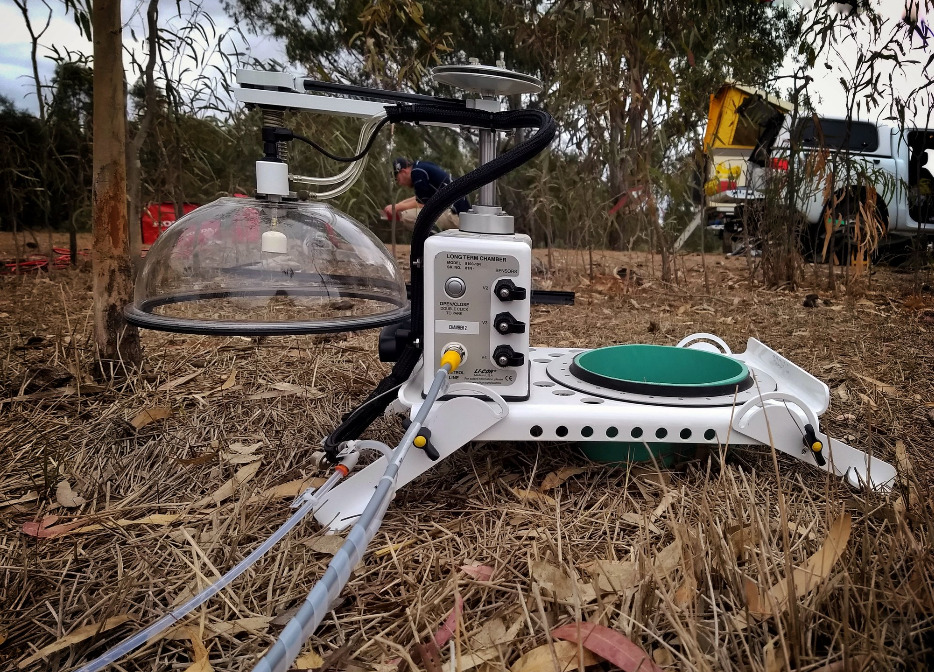Freshwater scientists from the Blue Carbon Lab completed a 14 day field trip to the Murray Local Land Services (LLS) region in NSW, where they monitored carbon stocks and fluxes from a floodplain billabong.
Wetlands are known to store significant quantities of carbon, but they can also produce greenhouse gases such as carbon dioxide (CO2), methane (CH4), and nitrous dioxide (N2O).
However, changes in the amount of water getting to wetlands could reduce their ability to trap carbon, and even turn them into net sources of greenhouse gases (GHG).
PhD Students Giuditta Bonetti and Sarah Treby quantified the greenhouse gas fluxes in the transition from dry to wet phase, by taking measurement both before and after water entered the wetland.
During the 14-day field trip, they collected 12 soil cores, 624 microbe samples and over 950 GHG measurements. They used sophisticated equipment to capture the sptaila and temporal variability of greenhouse gases. This included ultraportable greenhouse gas analysers, and continuous greenhouse gas flux monitoring using Li-Cor chambers and GPS integrated greenhouse gas flux measures. Data is currently being analysed and should be available in the near future. We can’t wait to see their results! Follow their adventures at #MurrayWetlandCarbon
The Blue Carbon Lab thanks farmer Paul Martin and research assistant Melissa Wartman who were indispensable for the success of the fieldwork.
*This research was funded by the Murray Local Land Services and supervised by Dr. Paul Carnell, Dr Stacey Trevathan-Tackett and A/Prof Peter Macreadie from Deakin University.

